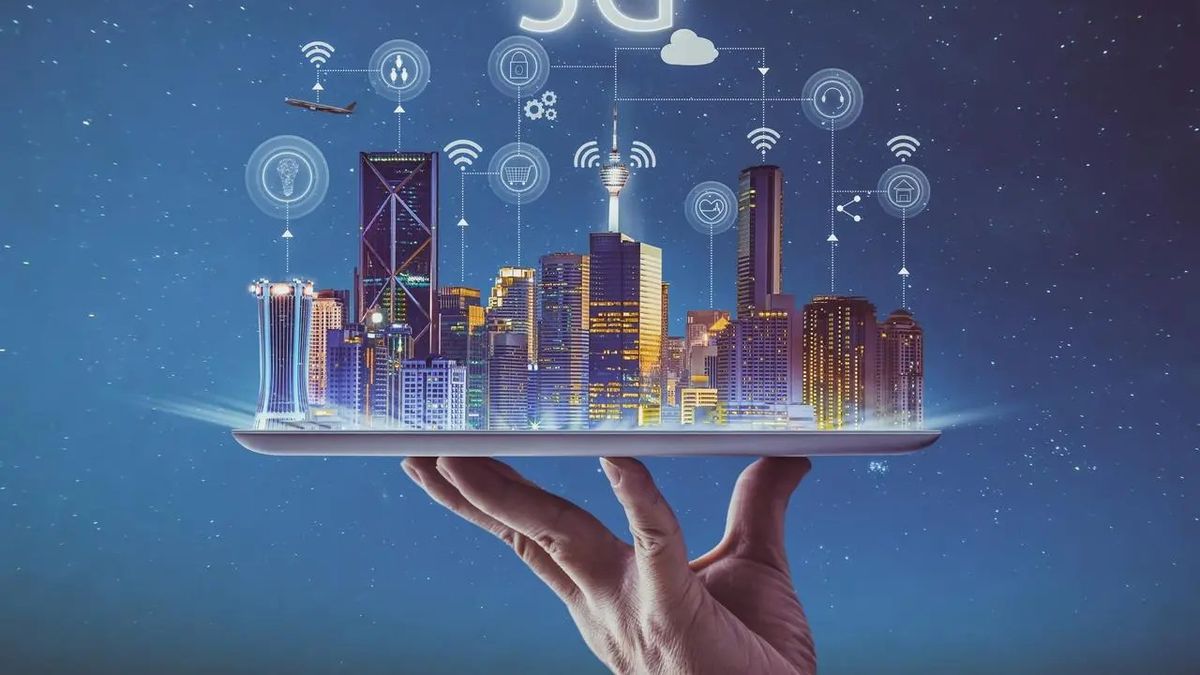The new network has a market projection for a value of 65,000 million dollars worldwide by 2026. Its landing in Uruguay implies not only a competitiveness strongest among telecommunications companies -among which the state-owned before has reserved one of the three blocks tendered locally-but also a great opportunity for the rest of the companies in the country, especially those of services and fintech.
Optimization, automation and speed, advantages of 5G
5G triggers a wide range of possibilities. Since the creation of smart cities until the development of the so-called internet of things (IoT), which will allow users to be part of a complex ecosystem of interconnected devices.
For Uruguayan companies, the arrival of new technology could mean a leap in quality, especially in the IT sector. “This presents an opening to new business opportunities for companies that develop solutions linked to the computer industry”, stated claudio siebeldirector of T2Companya company dedicated to the investigation of new technologies in the area of telecommunications, to scope.com.
The truth is that 5G, having a greater bandwidth than its predecessors, It will exponentially multiply the number of connected devices and, paradoxically, reduce energy consumption.
In addition, it will make it possible to transmit data in much larger volumes, automated through intelligent robotsthrough the cloud and with a huge reduction in the latency (i.e. in real time). It is a revolution in terms of optimization, expediting and greater efficiency in the productive processes of the companies.
“For the end user, it affects us positively, as long as it is a good design of the 5G network,” he told this medium. Franco Micellidirector of Abya Corporation, an international Cloud Gaming firm, a fledgling industry where video games are run from a remote system. “Our user requires low latency,” explained the computer engineer.
Opportunities also in the manufacturing and agricultural sectors
Although the heading fintech is one of those who push the most for the realization of this new scenario, other more traditional could also take advantage of it to overcome their own difficulties.
In it Manufacturing sectorFor example, it is often thought linear production process: inputs are requested, there are preconfigured machines that process them, there is a constant flow and the result is a process that finds it difficult to respond quickly to requests. changes in demand and setbacks, such as when an appliance stops working.
Instead, 5G could allow these processes to become more dynamic, flexible, self-regulating, with greater reaction capacity and therefore higher productivity.
In it field there is also ground to cover. For example, Siebel, in addition to being a director of T2Company, leads interface, a firm that recently created a new area dedicated to agriculture where they develop projects that have to do with the monitoring of live cattle. “Through a series of sensors, we detect the behavior of the cows,” she explained.
“We can see the behavior of the cattle, know how many times the cow lowers its head, where it moves and, based on that, know where the best pastures are. Thus, we can help the agricultural producer to be more efficient”, continued the businessman, who marked this case as an example where the fifth generation network can “add value”, since it would allow them to obtain the information in real time and in large volumes.
The problem of the cost-benefit relationship between investment and results
Gaston Farias Bouvierfounder of we housean IoT solutions consultancy for companies, warned Ámbito.com about a point outside of technology: “It is expensive”. In those two words is enclosed a whole discussion regarding whether, for the investment it requires, 5G is worth it or not.
It is estimated that the cost for the development of fifth generation infrastructure in the next 10 years will reach 4 trillion dollars around the globe, according to Forbes. For Farías Bouviver, “The benefits are not that much greater than the costs.”
Faced with the promises that 5G brings with it, the specialist expressed that “there are issues of backward compatibility that make this not so true” and that “many of those resources They are already available in 4G”. In this sense, he specified: “They say that you could use NB-IoT or Cat-M1, certain protocols or hardware devices that allow you to access better costs, but those are already available in 4G. So, it’s just older technology with a more expensive infrastructure network”.
Miceli, from Abya, noted another caveat: “If you make a bad planning and a bad deploymentwe end up with the same situation we have today in 4Gwhere in certain places there is a saturation”. The engineer explained that “the more people are hanging from the same cell, the less capacity there is, and all the benefits of 5G are not really there, because there are too many people.”
Along these lines, Miceli insisted that for the new network to work in Uruguay, the planning must take into account that the antennas are not located in such close places; Otherwise, they would generate interference between them. That, in such a case, will already exceed the companies and will be the challenge of the three firms that obtain the license starting this year.
Source: Ambito




